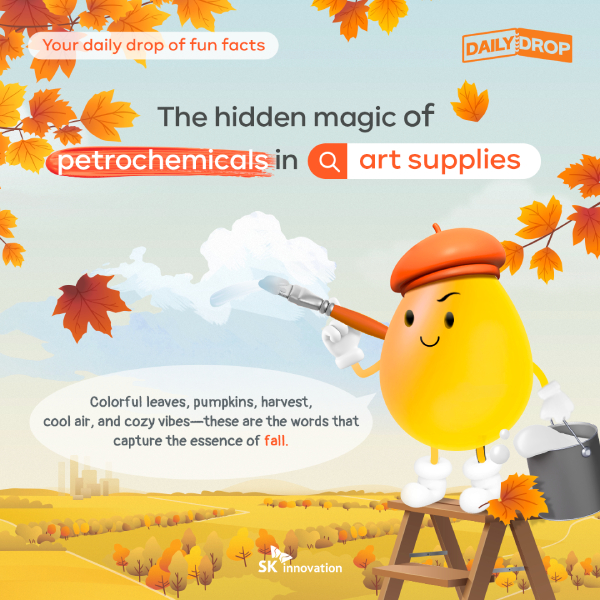 Trends & Reports
Trends & Reports

On October 24, 1901, Annie Edson Taylor, a 63-year-old American schoolteacher, climbed into a large oak barrel and plunged over Niagara Falls to mark her birthday. She survived the 53-meter drop from the massive waterfall, becoming the first person in history to do so at Niagara Falls. How did she manage to survive this perilous trip?
Taylor’s survival was credited to the specially designed barrel she used. Ordered from a local beer cask production company, the barrel was 1.4 meters tall and weighed 73 kilograms. It was further reinforced with iron plates and cushioned to absorb the impact. At the time, barrels like these were typically used for storing beer and wine, but their durability, buoyancy, and watertight construction made them ideal for Taylor’s journey.

The photo of Annie Taylor, who became the first person to survive a plunge over Niagara Falls in an oak barrel on October 24, 1901 (Source: Wikipedia)
Over time, barrels evolved from simple containers for food and alcohol to essential storage units for crude oil trading and shipment. Consequently, the barrel became a key global volume unit for crude oil trading and transportation. Today, the “barrel” remains the international standard for measuring and transporting crude oil. Let’s explore the fascinating history of how the barrel became synonymous with oil in the international petroleum industry.
| When did oil start being stored in barrels?
Though records of oil trading date back to ancient times, only small volumes were traded, making it difficult to establish a universally recognized or standardized measurement across all countries. However, in August 1859, when Edwin Drake successfully drilled the first oil well in Titusville, Pennsylvania, large-scale commercial production and oil consumption began, dramatically changing the situation.

The Stephens and Heisman Cooper Shop in 1859 near Edwin Drake’s oil well in Titusville, Pennsylvania, when commercial oil production began in the U.S. (Source: Oil History)
As drilling volumes increased, the surge in oil production led to a shortage of adequate storage facilities. The mountainous terrain around Titusville further complicated oil transportation. Additionally, with the expansion of oil transportation and trade, it became necessary for oil producers and transporters to standardize the various measurement systems they had been using. In response, oil producers began using wooden barrels, commonly available for storing whiskey, beer, and salt, to transport crude oil down the Allegheny River. This marked the beginning of oil transportation using barrels.
| The barrel, a unit for measuring volume: How many liters are in one barrel?
The barrel not only became a container for storing crude oil but also established itself as the international standard unit for measuring oil volume. One barrel is typically equivalent to 42 gallons, based on the US gallon standard.
1 barrel = 42 gallons ≈ 159 liters

Interestingly, 1 barrel wasn’t always set at 42 gallons. As mentioned earlier, barrels were used for storing wine, beer, and other liquors. They had the advantage of being mass-produced and capable of holding large quantities. However, the size varied depending on the type of liquor being stored. At that time, wine was stored in 42-gallon barrels (liquor casks), while whiskey was stored in 40-gallon barrels.
As demand increased and crude oil began being sold in barrels like wine and whiskey, problems began to emerge. The difference in volume between whiskey and wine barrels led to variations in the amount of oil depending on which barrel was used. Additionally, when the oil reached its destination, some would leak or evaporate, causing further issues. Naturally, buyers became dissatisfied and demands grew louder for a standardized amount of oil to ensure uniformity. As a result, oil producers agreed to standardize by using 42-gallon wine barrels to transport crude oil. Furthermore, the 42-gallon barrel was the ideal size and weight for various modes of transportation, such as wagons, trains, and ships, allowing for more efficient use of labor and space.
To ensure efficiency and reliability, the size of the barrel was standardized at 42 gallons. This standard was adopted by the Petroleum Producers Association in 1872. A decade later, in 1882, it was officially recognized by the U.S. Geological Survey and the U.S. Bureau of Mines. Today, with advancements in transportation technology, crude oil is transported via pipelines and steel drums, replacing wooden barrels.

(Left) Stacked barrels ready for crude oil transportation (Source: American Oil & Gas Historical Society) / (Right) Barrels being loaded into a boxcar (Source: Wooden Barrel Manual, 1944)
| Why does the unit symbol for barrel, “bbl,” have two “b”s?
When looking at the word “barrel,” there is only one “b,” yet the unit symbol “bbl” contains two “b”s. It might seem like a typographical error, but interestingly, this abbreviation is internationally accepted and widely used.

Blue wooden barrel in the center (Source: Blue Barrel Supply)
There are various theories as to the origin of “bbl,” but the most famous one is that it comes from Standard Oil, a dominant player in the 19th-century U.S. oil industry, which painted its barrels blue—hence “blue barrel” (bbl). This has become somewhat of a myth in the oil industry. Another theory suggests that the term “bbl.” was used long before Standard Oil’s blue barrels appeared in records for various goods like honey and whale oil.
There is also a theory that “bbl.” was adopted to prevent confusion with other units, helping to avoid mix-ups in unit notation. At the time, “bl” was already used as the abbreviation for “bushel,” a unit for measuring agricultural products like grain or fruit (with the U.S. bushel equivalent to about 27.216 kg). To avoid confusion, “bbl” was adopted as the distinct notation for barrels.
| How are other energy sources besides crude oil measured?
In the European Union (EU) or Japan, sometimes the unit of crude oil transactions is liters. This is because these countries have adopted the International System of Units (SI) for their measurements. The SI standardizes units for electric current, temperature, time, length, and mass, etc., according to the metric system*, creating a widely accepted international measurement standard/standard of measurement. However, most international crude oil transactions are currently conducted in U.S. dollars, with the volume measured in barrels – a unit originating from the U.S., which remains the standard measurement for crude oil worldwide.
*Metric system: A decimal-based measurement system using the meter (m) for length, the liter (ℓ) for volume, and the kilogram (kg) for mass as the fundamental units.
Then, what units of measurement are used for energy sources other than crude oil? Coal, which has been used as an energy source for much longer than crude oil, is solid and is measured in tons for ease of trade and transportation. On the other hand, natural gas is measured by volume in cubic meters (m³), which refers to the volume of a cube with sides measuring 1 meter each, meaning that 1 cubic meter (m³) equals 1,000 liters. Liquefied natural gas (LNG), as the name suggests, is a gas in a liquid or fluid state, so it is primarily measured in tons and cubic meters.

In the energy industry, where various units are used, the “barrel” has become a symbolic measure of oil. What started as a simple wooden cask has now become the global standard unit representing the massive oil economy. The barrel now plays an indispensable role in oil transportation and across the entire petroleum industry, including production and manufacturing. The next time you encounter the word “barrel,” reflect on its evolution from a simple wooden cask to a global symbol of the vast and intricate oil economy, encapsulating a rich history that continues to shape the petroleum industry today.
– [Energy Tidbits] How kerosene that once illuminated the night now powers giant airplanes
– [Energy Tidbits] From “Light and Salt” to “Light and Petroleum,” discovering the secrets behind “treasure hunts” through the evolution of drilling techniques
– [Energy Tidbits] Petroleum was a key ingredient in ancient mummification?










 Youtube
Youtube Facebook
Facebook Instagram
Instagram Linkedin
Linkedin






















